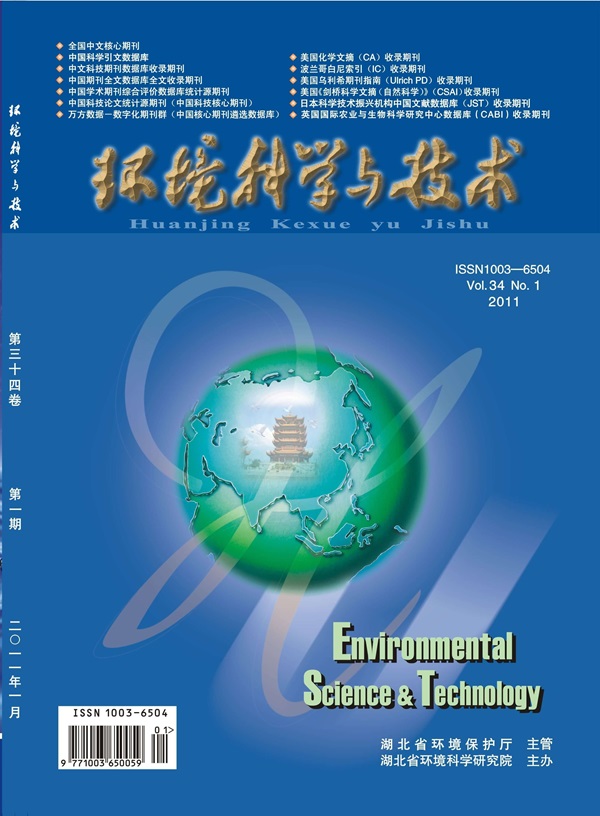Electron Transfer Expressway from Peroxydisulfate to O2 Mediated by Diatomic Sites Accelerating 1O2 Production for Disinfection.
IF 11.3
1区 环境科学与生态学
Q1 ENGINEERING, ENVIRONMENTAL
引用次数: 0
Abstract
Current studies on high-density single-atom catalysts (SACs) with the coexistence of single atomic and diatomic sites have ignored the underlying contribution of diatomic sites for persulfate-based disinfection technology. Herein, high-density atomic Ni anchored on N-doped carbon (Ni1-NC) containing abundant Ni diatomic (Ni2-N6) sites, was fabricated, exhibiting superior peroxydisulfate (PDS) activation to generate singlet oxygen (1O2) for disinfection compared with other M1-NC, due to the fact that Ni1-NC possessed the highest negative crystal orbital Hamilton population value. A dynamic promotion effect toward disinfection, relying on the level of external O2 was discovered. This promotion effect was achieved through the cooperation of PDS and O2 which was mediated by Ni2-N6 sites bridging electron transfer from PDS to O2, thereby suppressing the energy barriers of rate-determining steps. Disinfection with decreased horizontal gene transfer was achieved by disrupting coenzyme Q, inhibiting adenosine triphosphate synthesis, and degrading extracellular polymeric substances via 1O2. A continuous flow system based on a Ni1-NC@sponge fixed reaction bed displayed persistent disinfection for 336 h under aeration. This work presents a transboundary integrated PDS disinfection strategy combining physical aeration and chemical oxidation through tailoring diatomic sites in SACs.双原子位点介导的过硫酸氢盐向O2的电子转移高速公路加速了消毒用1O2的产生。
目前对单原子和双原子位点共存的高密度单原子催化剂(SACs)的研究忽略了双原子位点对过硫酸盐消毒技术的潜在贡献。本文将高密度Ni原子固定在含有丰富Ni双原子(Ni2-N6)位点的n掺杂碳(Ni1-NC)上,与其他M1-NC相比,由于Ni1-NC具有最高的负晶体轨道汉密尔顿居群值,因此具有优越的过硫酸氢(PDS)活化能力,可以产生用于消毒的单线态氧(1O2)。发现了依靠外氧水平对消毒的动态促进作用。这种促进作用是通过PDS和O2的协同作用实现的,通过Ni2-N6位点桥接PDS到O2的电子转移,从而抑制了速率决定步骤的能量势垒。通过破坏辅酶Q,抑制三磷酸腺苷合成,并通过1O2降解细胞外聚合物物质,从而减少水平基因转移的消毒。基于Ni1-NC@sponge固定反应床的连续流系统在曝气条件下持续消毒336 h。这项工作提出了一种跨界综合PDS消毒策略,结合物理曝气和化学氧化,通过剪裁SACs中的双原子位点。
本文章由计算机程序翻译,如有差异,请以英文原文为准。
求助全文
约1分钟内获得全文
求助全文
来源期刊

环境科学与技术
环境科学-工程:环境
CiteScore
17.50
自引率
9.60%
发文量
12359
审稿时长
2.8 months
期刊介绍:
Environmental Science & Technology (ES&T) is a co-sponsored academic and technical magazine by the Hubei Provincial Environmental Protection Bureau and the Hubei Provincial Academy of Environmental Sciences.
Environmental Science & Technology (ES&T) holds the status of Chinese core journals, scientific papers source journals of China, Chinese Science Citation Database source journals, and Chinese Academic Journal Comprehensive Evaluation Database source journals. This publication focuses on the academic field of environmental protection, featuring articles related to environmental protection and technical advancements.
 求助内容:
求助内容: 应助结果提醒方式:
应助结果提醒方式:


